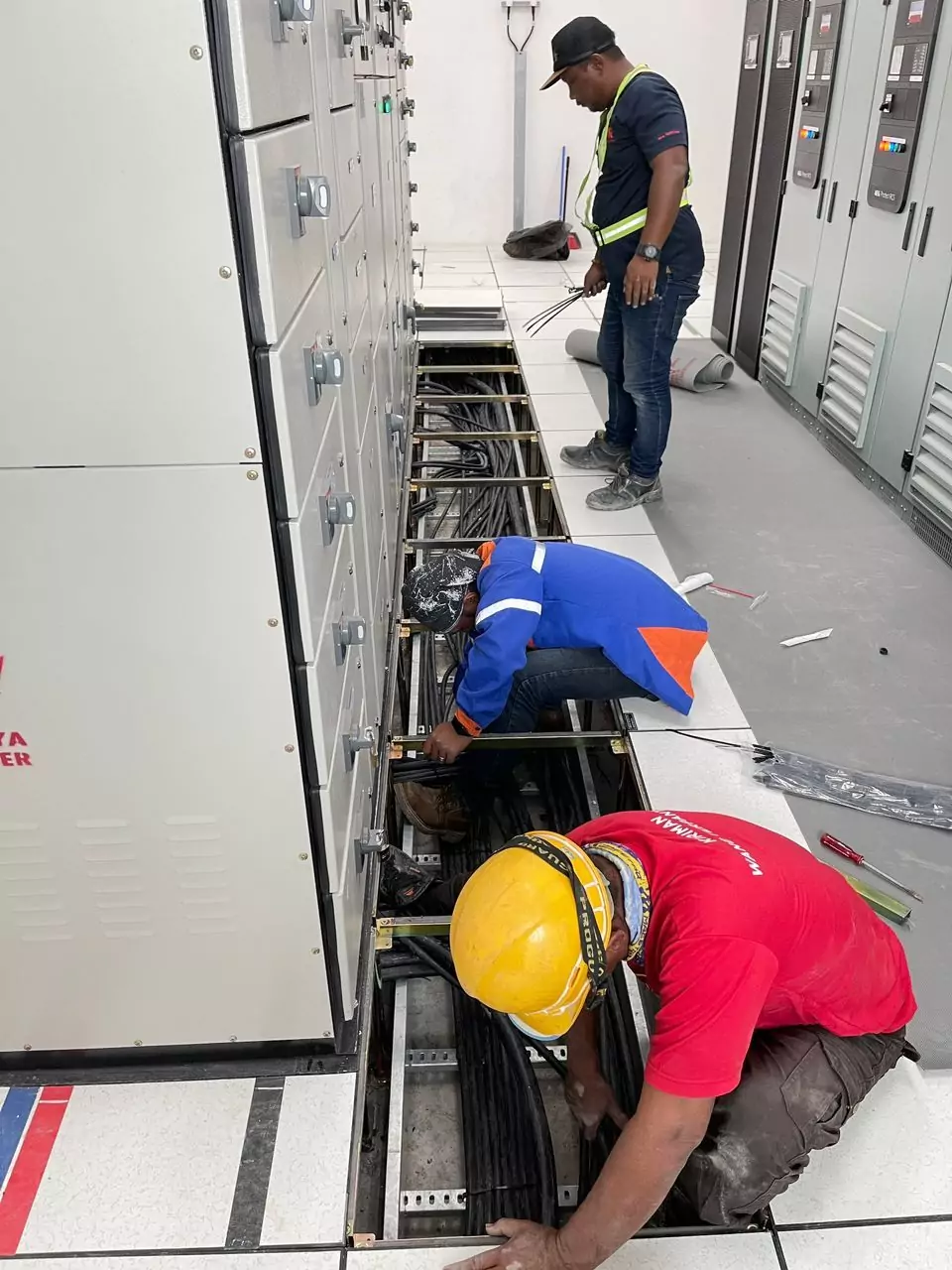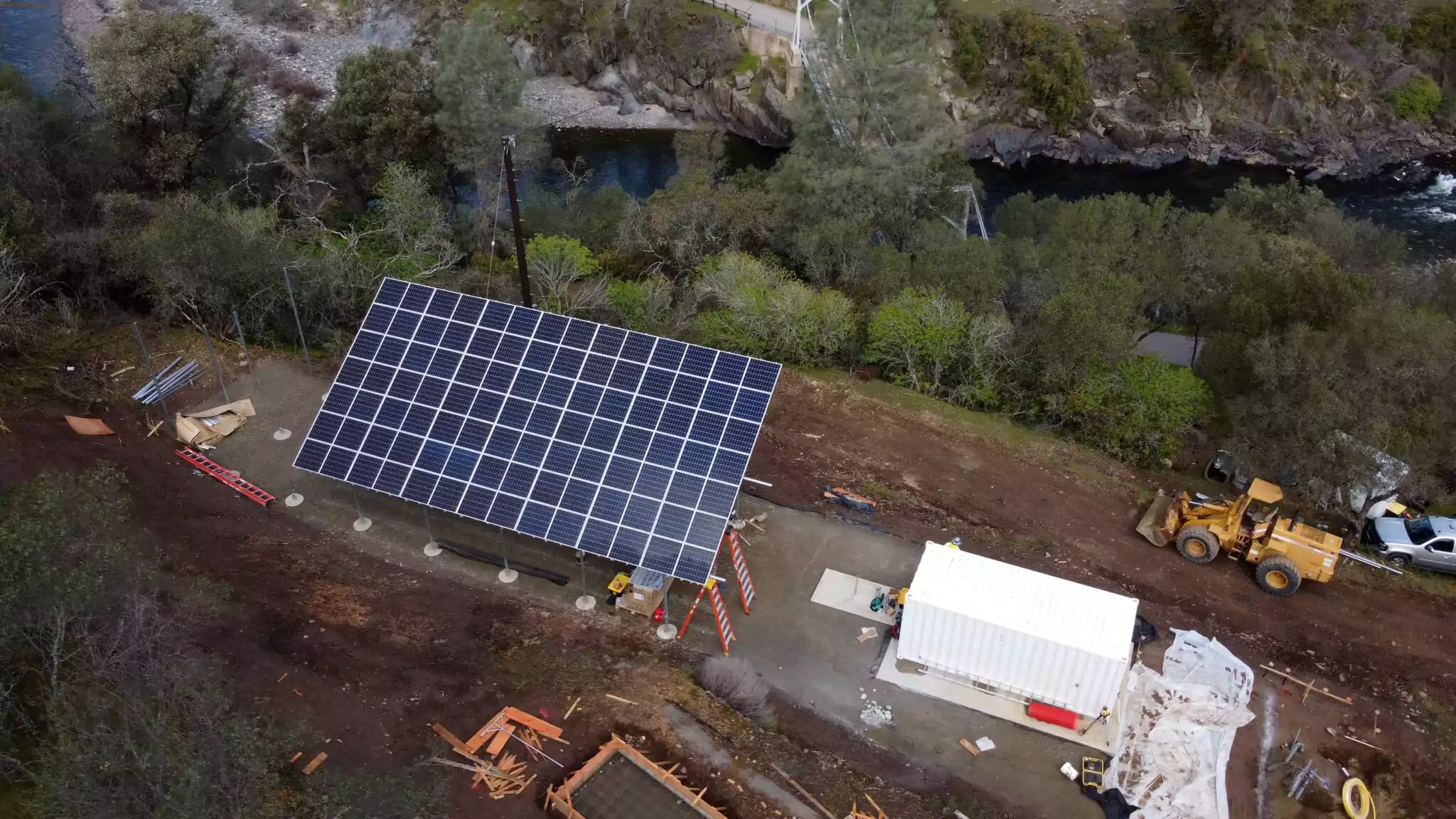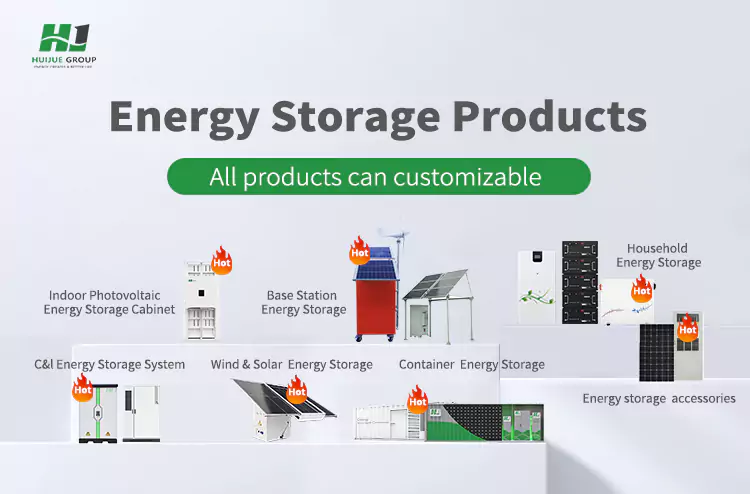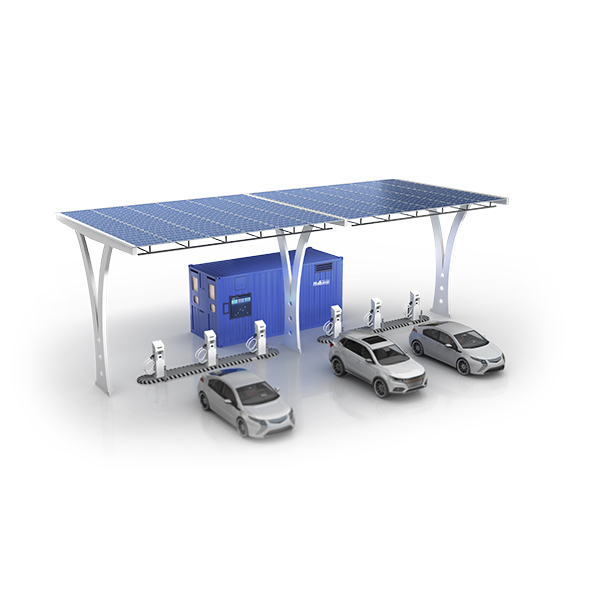
Optical Storage And Charging Integrated Microgrid Solution
Optical Storage And Charging Integrated Microgrid Solution
Product introduction:
The Huijue's Optical-storage-charging application scenario is a typical application of microgrid energy storage. The core consists of three parts – photovoltaic power generation, energy storage batteries, and charging piles.
The core consists of three parts – photovoltaic power generation, energy storage batteries, and charging piles. These three parts form a microgrid, using photovoltaic power generation to store electricity in the energy storage battery. When needed, the energy storage battery supplies the electricity to the charging pile. Through the light-storage-charging system, this clean energy of solar energy is transferred to the power battery of the vehicle for the vehicle to drive. According to the demand, the integrated light-storage-charging charging station can achieve two grid connections and off-grid operating modes. When the integrated Optical-storage-charging charging station is connected to the grid, in addition to receiving energy from the photovoltaic solar panels, the energy storage battery charges when the electricity price is low and discharges when the electricity price is high, which reduces the charging cost while being able to peak shaving and valley filling, and also makes up for the disadvantage of the discontinuous solar power generation. When the power grid is powered off, the light-storage-charging system can use the off-grid operating mode to emergency charge the new energy vehicles.
Photovoltaic system:
It uses the nearby roof photovoltaics and the parking lot awning photovoltaics. Multiple photovoltaic components are combined to connect to the photovoltaic DC combiner box, and are connected to the grid through the photovoltaic inverter, and the on-and-off-grid photovoltaic power generation system effectively solves the problems of power generation, discharge, and power supply of solar photovoltaic components, and the transformation of energy in the transmission process, ensuring the reliable, efficient, and safe operation of the entire system’s power generation so that the power station’s power generation can run stably.
Energy storage system:
The energy storage system has a battery compartment and an equipment compartment. The battery system consists of a single cell as the smallest unit to form a battery module and a battery cluster, and the battery capacity is configured according to the actual needs of the site; the equipment compartment is placed with an energy storage converter (PCS), AC distribution cabinet, DC distribution cabinet, fire protection system, and EMS & dynamic loop monitoring cabinet, etc. The energy storage system is connected to the system through the AC bus to improve energy utilization efficiency and balance the production and supply of the power system.
Charging pile:
The charging pile interacts with users through the code-scanning charging method. The charging pile system includes intelligent monitoring and intelligent measurement. The charging pile intelligent controller has the functions of measurement, control, and protection for the charging pile, such as operating status detection, fault status detection, and linked control during the charging and discharging process; the AC output is equipped with an AC smart electric energy meter for AC charging measurement, with complete communication functions, and can upload the measurement information to the charging smart controller and the network operation platform through RS-485 respectively.
Solution features:
- The DC microgrid uses the coupling technology of the DC busbar to reduce the loss of AC-DC conversion;
- Improve the self-generation and self-use rate of photovoltaics, smooth the load curve, and improve the friendliness of the power grid;
- The power configuration of the photovoltaic – energy storage-charging pile is flexible to meet the customized needs of customers;
- Make full use of photovoltaic power generation, increase the investment return rate, and achieve the power balance of the microgrid system;
- The power configuration of the photovoltaic – energy storage-charging pile is flexible to meet the customized needs of customers;
- Make full use of photovoltaic power generation, increase the investment return rate, and achieve the power balance of the microgrid system;
Solution advantages:
- Improve the utilization of clean energy
- Based on the integrated system of light storage and charging, reduce the use of traditional energy, reduce the emission of polluting gases, and increase the utilization of new energy
- Promote the development of smart power grids
- Use new and distributed energy to improve the energy structure, reduce dependence on traditional energy, and promote the development of smart power grids
- Promote the development of the energy Internet
- Use Internet technology to integrate emerging energies such as light storage and charging with cloud computing, big data, and artificial intelligence, and promote the development of the energy Internet.
Optical Storage, Charging, and Integrated Microgrid Solution FAQ 5
1. What is an Optical Storage, Charging, and Integrated Microgrid Solution?
An Optical Storage, Charging, and Integrated Microgrid Solution is a localized energy supply network that integrates photovoltaic (PV) power generation, energy storage, and electric vehicle charging into a single, efficient, and self-sustaining power system. Through power electronics conversion technology, this system seamlessly combines the electricity generated by solar PV, the stored energy in storage devices, and the charging services provided by charging stations for electric vehicles, creating a comprehensive and balanced power network.
2. What are the main components of an Optical Storage, Charging, and Integrated Microgrid Solution?
The key components of an Optical Storage, Charging, and Integrated Microgrid Solution include:
- Distributed Solar Photovoltaic (PV) Modules: Convert solar energy into electrical energy, serving as the primary energy source for the system.
- Energy Storage Devices: Store excess electrical energy generated by PV for later use, such as during nighttime or cloudy days, ensuring a reliable power supply. These can include lithium-ion batteries and other electrochemical or mechanical storage technologies.
- Charging Stations: Provide charging services for electric vehicles, supporting various charging modes including fast and slow charging.
- Load Management Facilities: Comprise power electronics, distribution infrastructure, monitoring, and protection systems, responsible for managing and controlling the energy flow and load distribution within the microgrid.
3. How does an Optical Storage, Charging, and Integrated Microgrid Solution work?
The operation of an Optical Storage, Charging, and Integrated Microgrid Solution revolves around:
- Photovoltaic Power Generation: During daylight hours, PV modules convert solar energy into DC electricity, which is then inverted into AC electricity for grid integration or direct use by charging stations.
- Energy Storage Regulation: When PV generation exceeds demand, excess energy is stored in energy storage devices. Conversely, when PV generation is insufficient or demand spikes, the stored energy is discharged to supplement the power supply.
- Charging Station Services: Charging stations draw energy from the grid or storage devices to fulfill the charging needs of electric vehicles.
4. What are the advantages of an Optical Storage, Charging, and Integrated Microgrid Solution?
The benefits of an Optical Storage, Charging, and Integrated Microgrid Solution include:
- Energy Savings: Efficient utilization of solar energy through PV and storage, minimizing energy waste.
- Environmental Protection and Emission Reduction: Solar power generation is clean and emissions-free, contributing to a greener environment.
- Enhanced Power Supply Reliability: Storage systems provide backup power during low sunlight hours or power outages, ensuring reliable power supply.
- Promotion of Electric Vehicle Adoption: By offering clean energy charging infrastructure, the solution supports the proliferation of electric vehicles.
- Flexibility and Economic Efficiency: The system can be tailored to suit diverse application scenarios, maximizing economic feasibility and practicality.
5. What are the application scenarios for an Optical Storage, Charging, and Integrated Microgrid Solution?
The solution finds use in various applications, including:
- Remote Area Power Supply: Providing stable and reliable power to regions where traditional grid connectivity is challenging.
- Electric Vehicle Charging Stations: Integrating PV, storage, and charging to offer clean energy charging services for electric vehicles.
- Industrial Parks and Commercial Areas: Offering flexible and efficient energy supply solutions to cater to the substantial power demands of these regions.
- Emergency Backup Power: Acting as a swift response and backup power source during natural disasters or unexpected events, ensuring critical loads remain operational.
Since we maintain control over our products, our customers can be assured of nothing but the best quality at all times.




 Chat Online
Chat Online







 Inquiry
Inquiry Online Chat
Online Chat